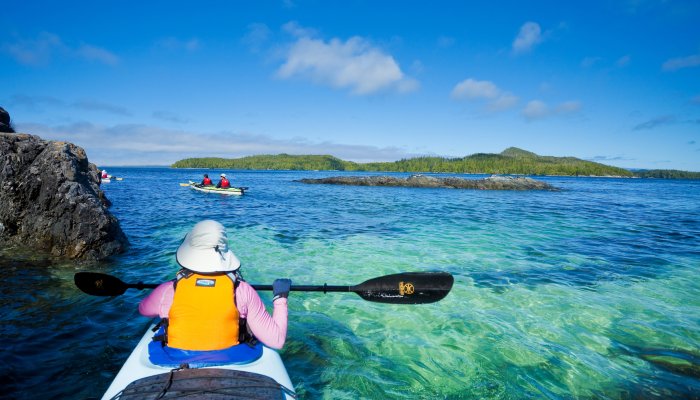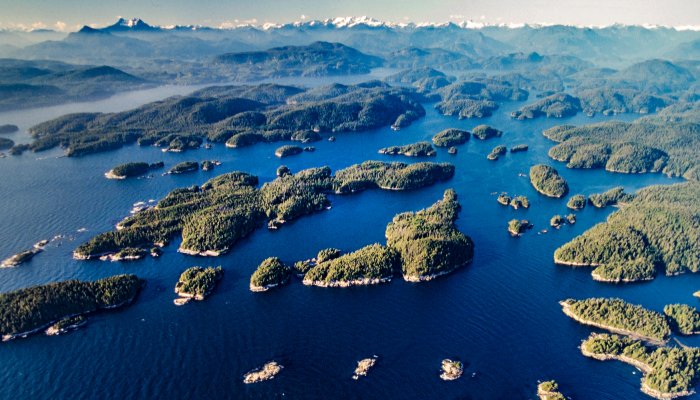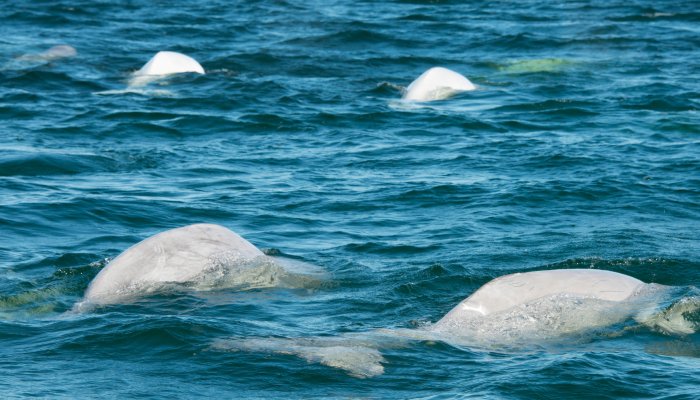Creature feature: Beluga whale (Delphinapterus leucas)
As the only member of the genus Delphinapterus, the beluga whale is a highly sociable cetacean that is truly one of a kind. It has been nicknamed the “sea canary” for its high-pitched squeaks and whistles, and is the only whale to regularly sport a stunning white coat.
The beluga shares the exclusive monodontid family with its closest cousin, the narwhal. Graceful yet playful, this unique species inhabits the Arctic seas and despite its lack of dorsal fin, it can deftly navigate the icy waters and locate breathing holes beneath frozen sheets.
Growing up to 18 feet long and over 3,500 pounds, the beluga is mid-sized for a whale yet larger than a dolphin. Blubber layers insulate its body from the chill while its exceptional hearing is adapted to detect subtle sounds beneath the rattling ice. Equipped with specialized anatomy and physiology, this unique whale survives and thrives in one of Earth's harshest marine environments.
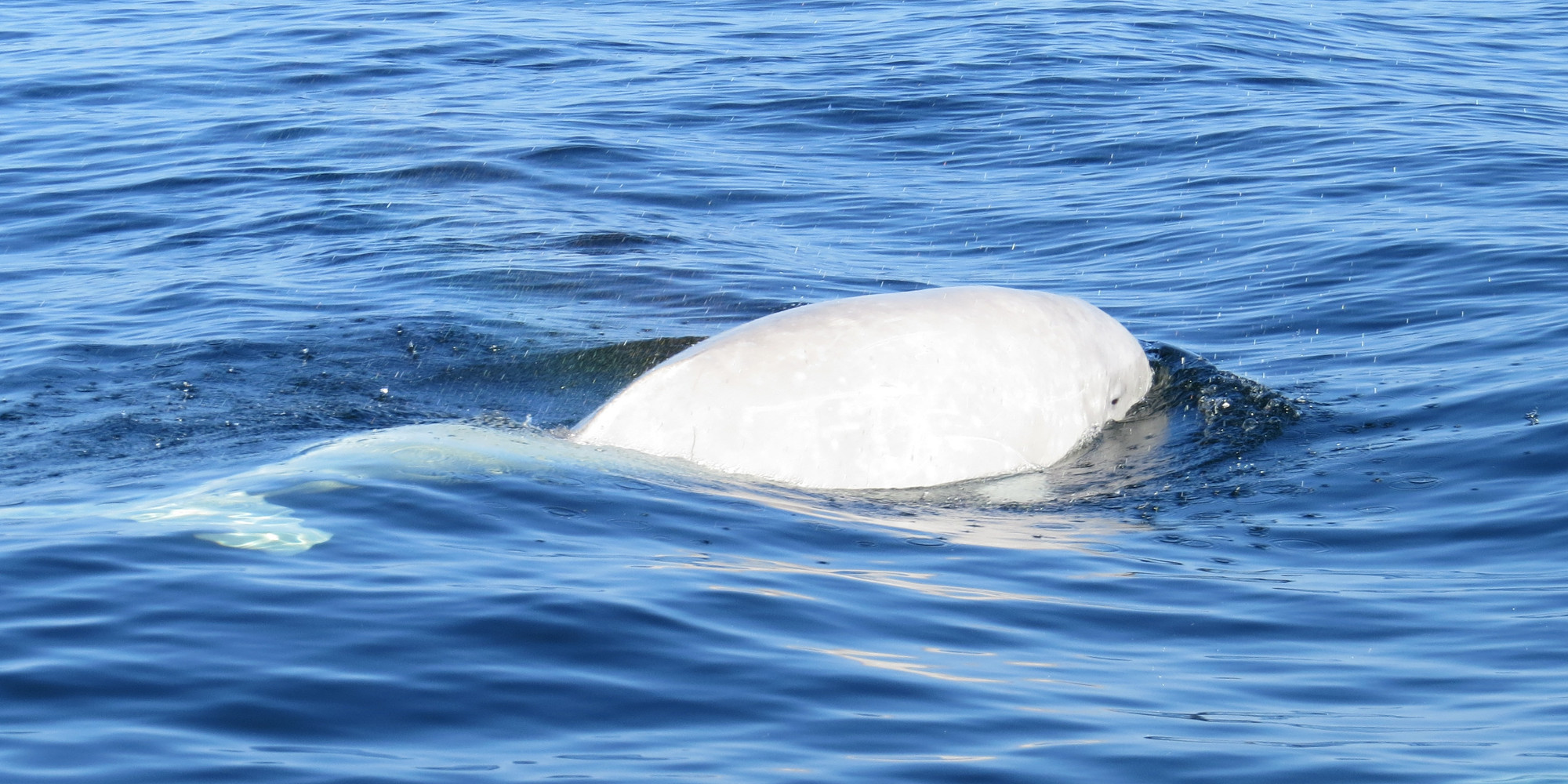
A distinctive appearance
The all-white appearance of the beluga whale makes it unmistakable. However, calves are typically born gray and darken to a blue-gray color after a month. Starting from around age seven for females and nine for males, they progressively lose their pigment until reaching their iconic white hue. This coloration camouflages belugas against the Arctic ice, helping to hide them from predators like polar bears and killer whales.
Unlike most whales, belugas shed their skin. In winter, their skin thickens and yellows (especially on the back and fins), then in the summertime, they rub themselves on riverbeds to slough off the dermal layer. This shedding helps to keep beluga coats gleaming white.
The beluga whale has a unique and malleable forehead. At the center is an echolocation organ called a “melon”, which contains fatty tissue. Unlike other cetaceans, the beluga's melon is extremely bulbous and lobed, forming a prominent bump on its head. By blowing air around its sinuses and changing the shape of the melon, the beluga can focus the sounds it emits for echolocation.
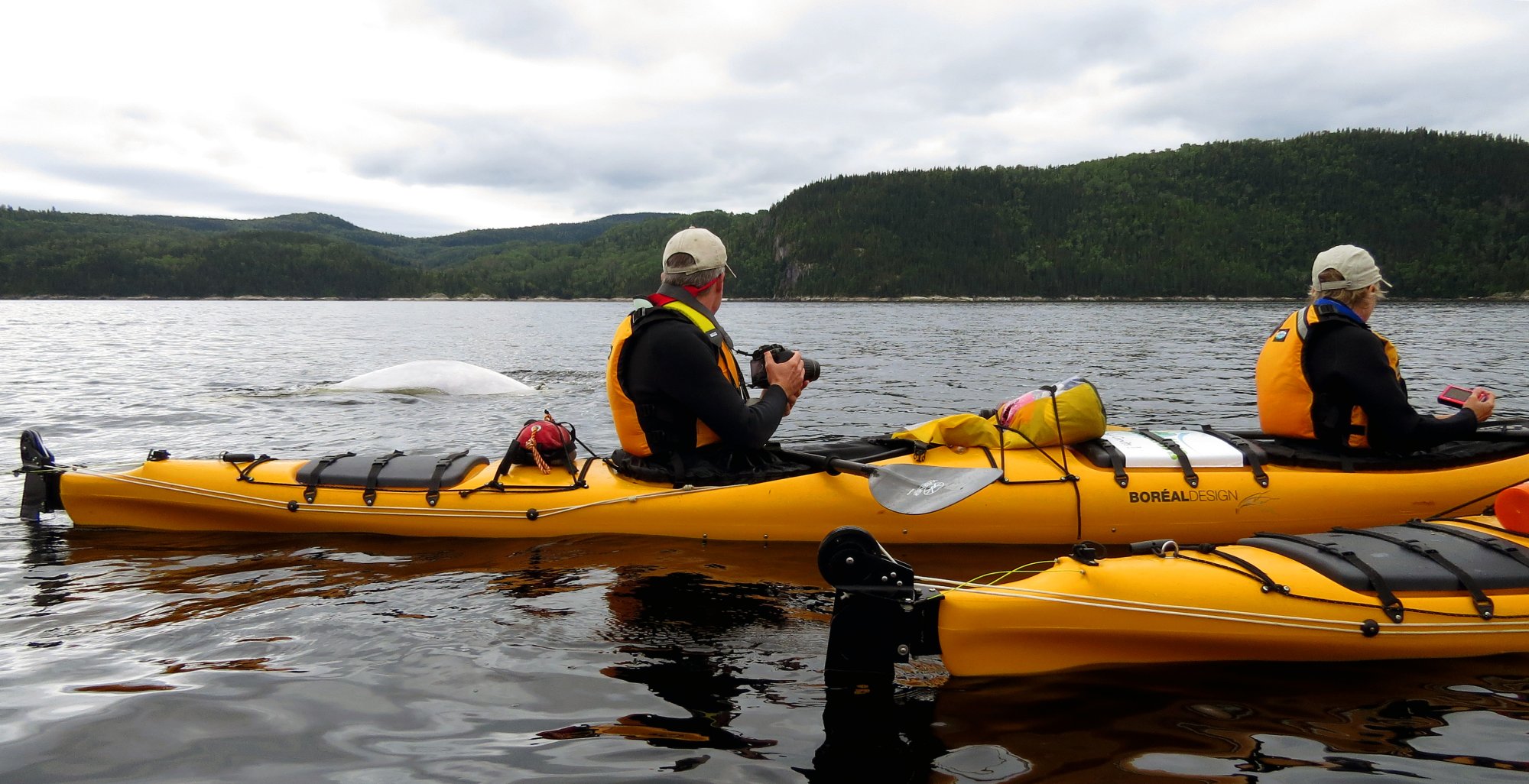
Highly social creatures
Beluga whales are highly social animals and typically swim in pods of about 10 individuals. However, these pods are unstable as individuals tend to move around or swim hundreds of miles away from one pod to join another. Generally speaking, beluga whale pods are in one of three categories: nurseries (mothers and calves), bachelors (all males) or mixed. When the summer rolls around, belugas can be seen gathering in the hundreds (or even thousands) in estuaries and shallow coastal waters.
Pods of belugas communicate constantly, chasing and playing with one another at the surface. They'll synchronize their movements in a behavior called “milling”, diving and surfacing as one. Belugas have been observed playfully interacting with wood, plants, and bubbles, revealing an intelligent and inquisitive spirit. Even in the wild, they exhibit a curiosity towards humans and will frequently swim alongside boats.

Adaptable eaters
Belugas aren't the fastest swimmers (they swim between 2 and 5 miles per hour), but they can dive over 2,000 feet below the water’s surface in search of food. They are opportunistic feeders, with their diet changing depending on the season and what is most readily available in their environment.
In the Beaufort Sea, belugas feed mainly on Arctic cod while those near Greenland fill their stomachs with Greenland halibut, rosefish, and northern shrimp. Alaskan belugas rely heavily on salmon while those in Quebec feed largely on cod, hake, redfish, worms, and squid.
Belugas exhibit their heartiest appetites in late winter and early spring when their insulating blubber is thickest. Inuit people have observed the animals fasting during their migration across Hudson Bay. The adaptability of the beluga diet provides a competitive advantage in the ever-changing Arctic marine landscape they call “home”.
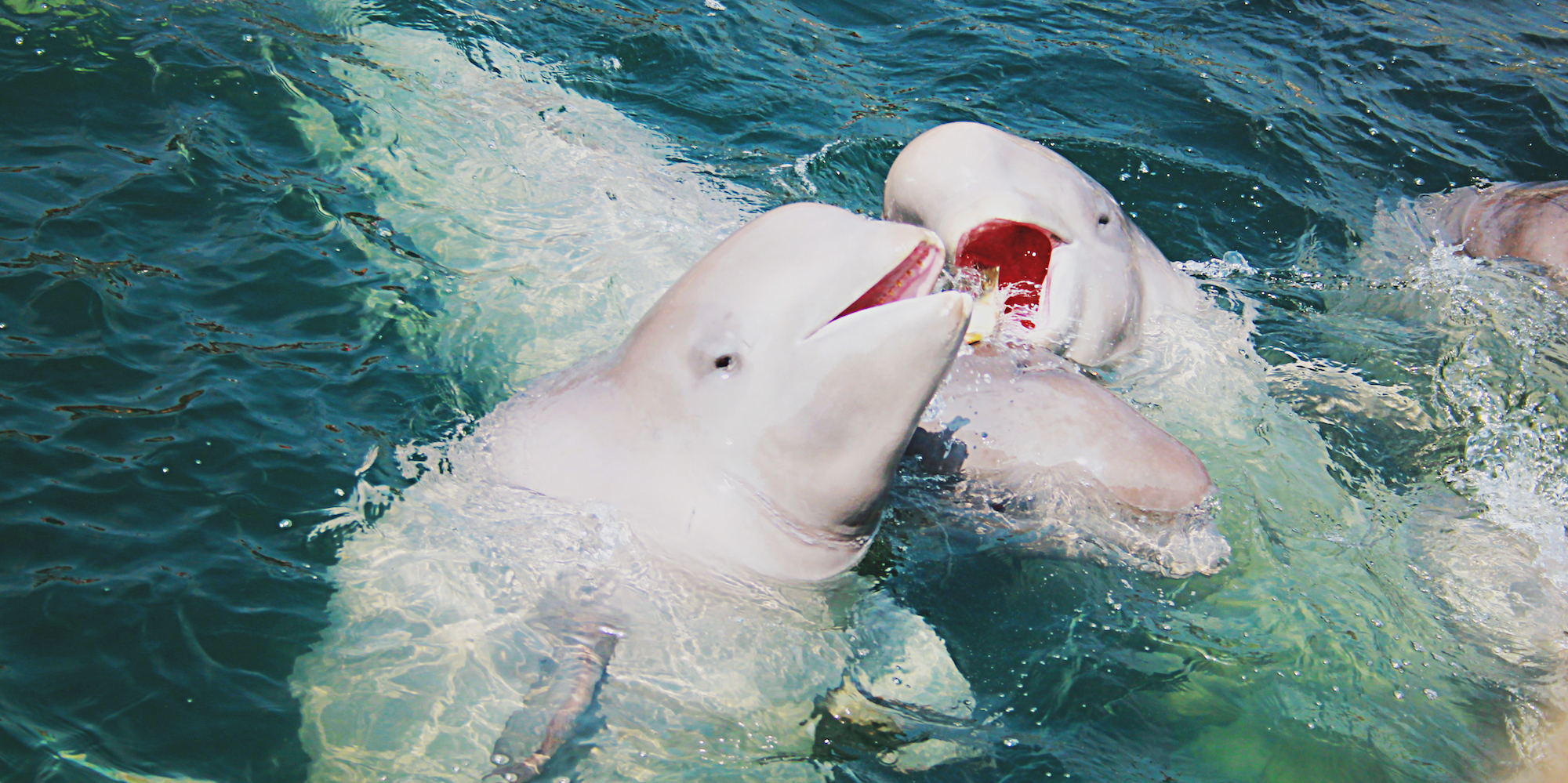
Whaling and population declines
For centuries, Inuit and Native American tribes sustainably hunted beluga whales, using them for both food and materials. When Europeans arrived in the 19th and 20th centuries, they too began hunting belugas, with little regulation, and populations of these ghostly white whales have declined substantially in many areas. Though robust in Alaska and Canada, numbers have dropped sharply in Russia and Greenland. This has led the International Whaling Commission to place a moratorium on most whale hunting, although it is still permitted by indigenous peoples.
Despite the moratorium on whaling, belugas face an array of other threats, both natural and manmade. Polar bears and killer whales prey on them while industrial pollution and climate change jeopardize their Arctic habitat. The beluga is now classified as “near threatened” globally by the IUCN Red List and certain subpopulations (including that of Alaska's Cook Inlet) are listed as “endangered”.
See beluga whales in the wild
Beluga whales can be found frolicking and feeding in some of the most remote places on the planet, including Alaska, northern Canada, Greenland, and the Svalbard archipelago. Whether spotted from shore or from the deck of a boat, watching as belugas glide through the water is a once-in-a-lifetime thrill for travelers venturing to the Far North.
While belugas have been spotted as far south as the Amur River Delta and the Shantar Islands in the Sea of Okhotsk, one of the best places to see them in the wild is in Quebec. Belugas can be spotted year-round in the Saguenay Fjord and St. Lawrence River, although the best time for whale watching is from May to November when minke, fin, and humpback whales are also observed.

